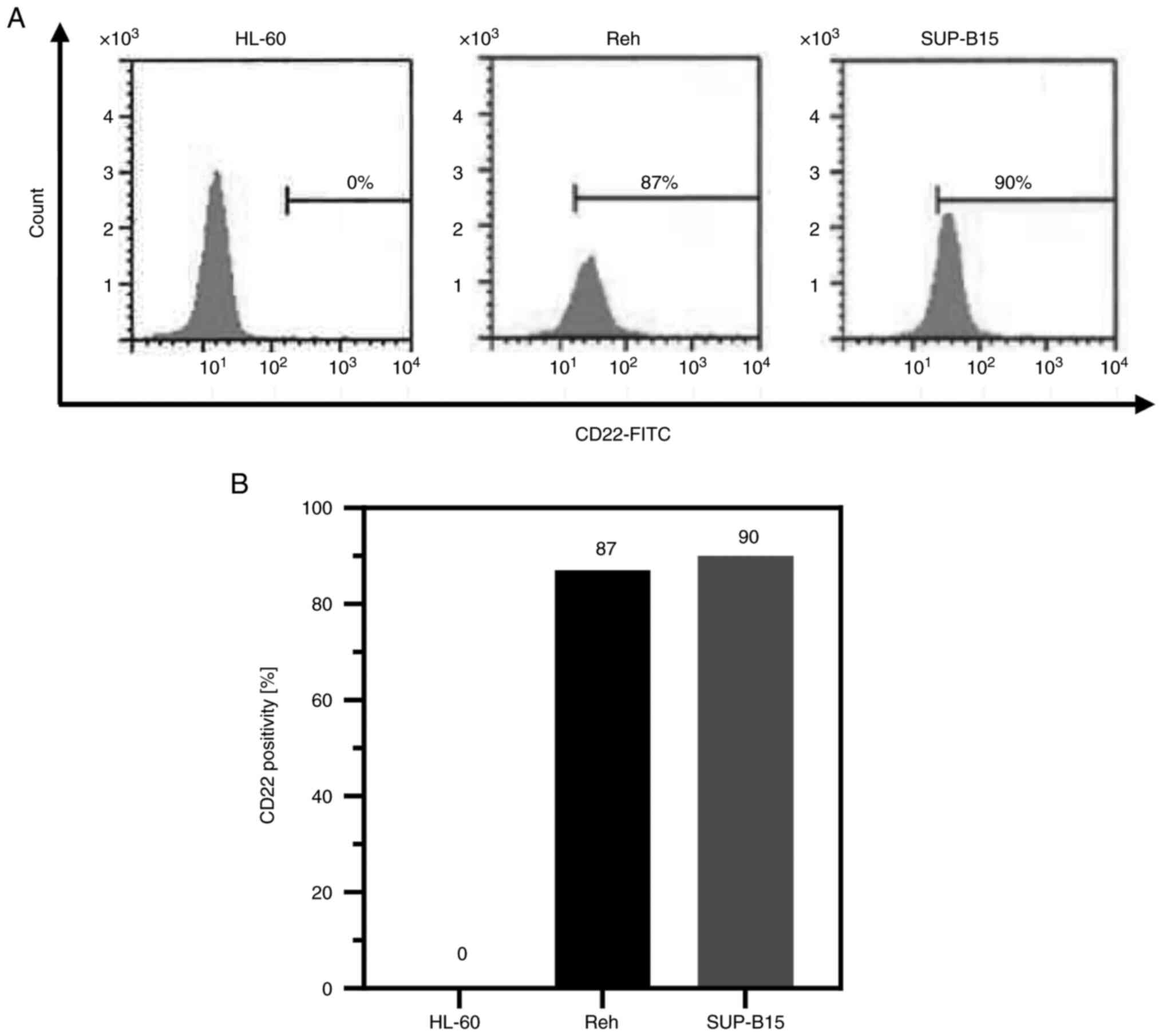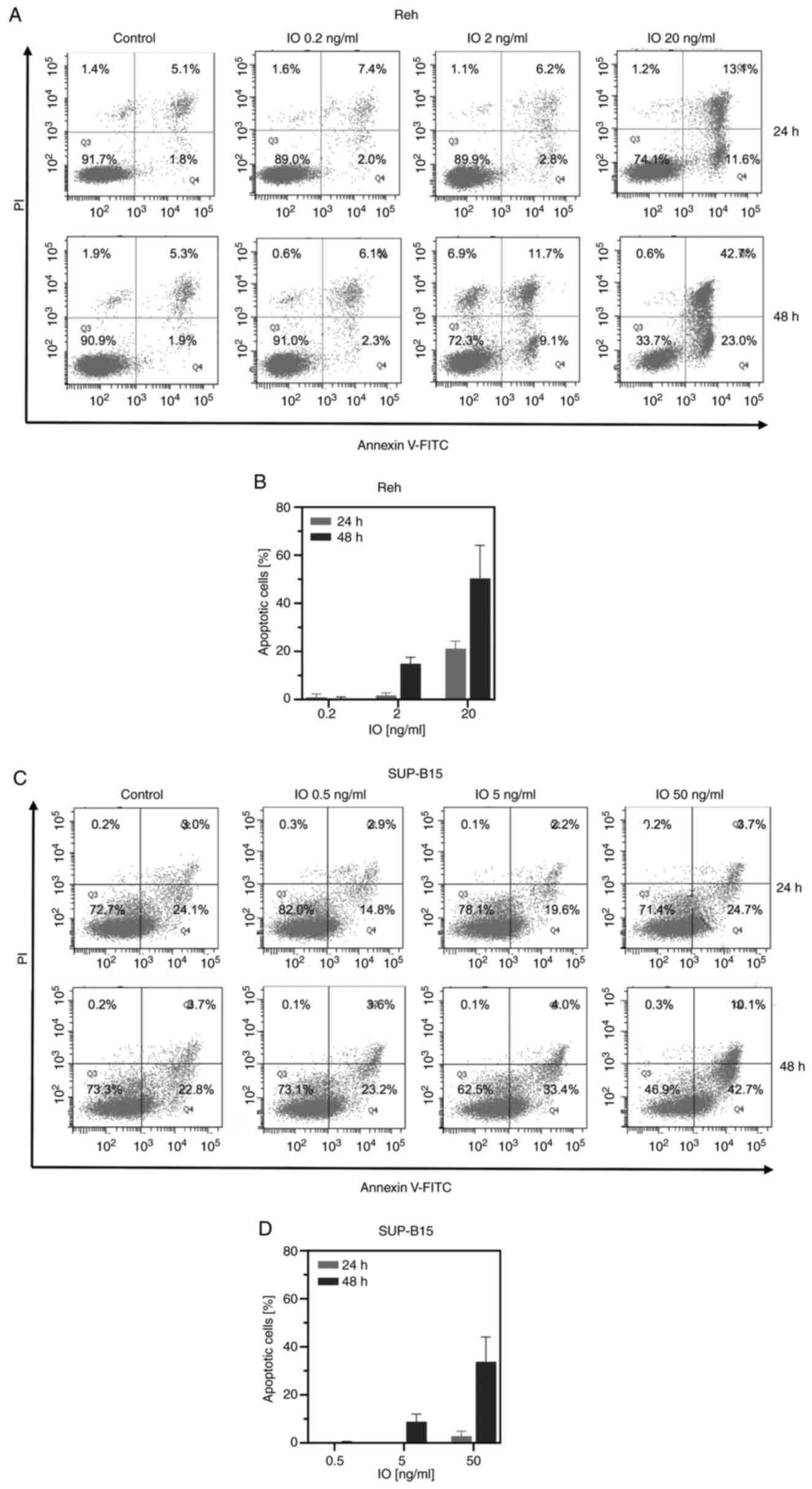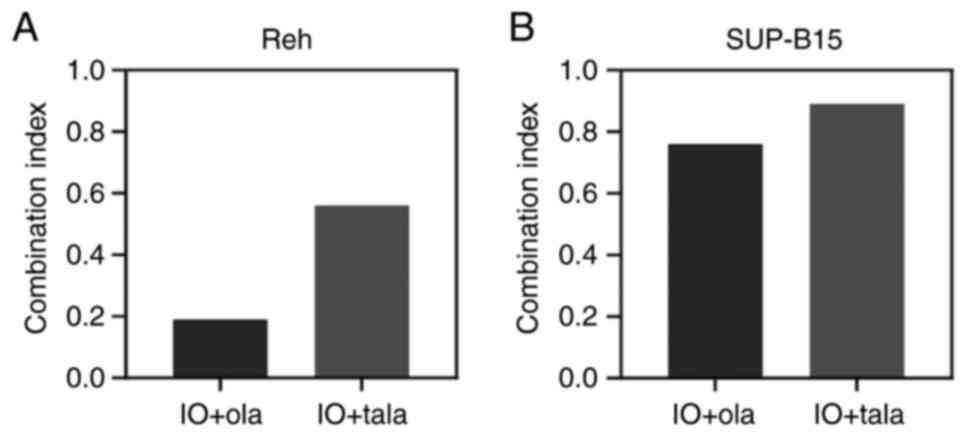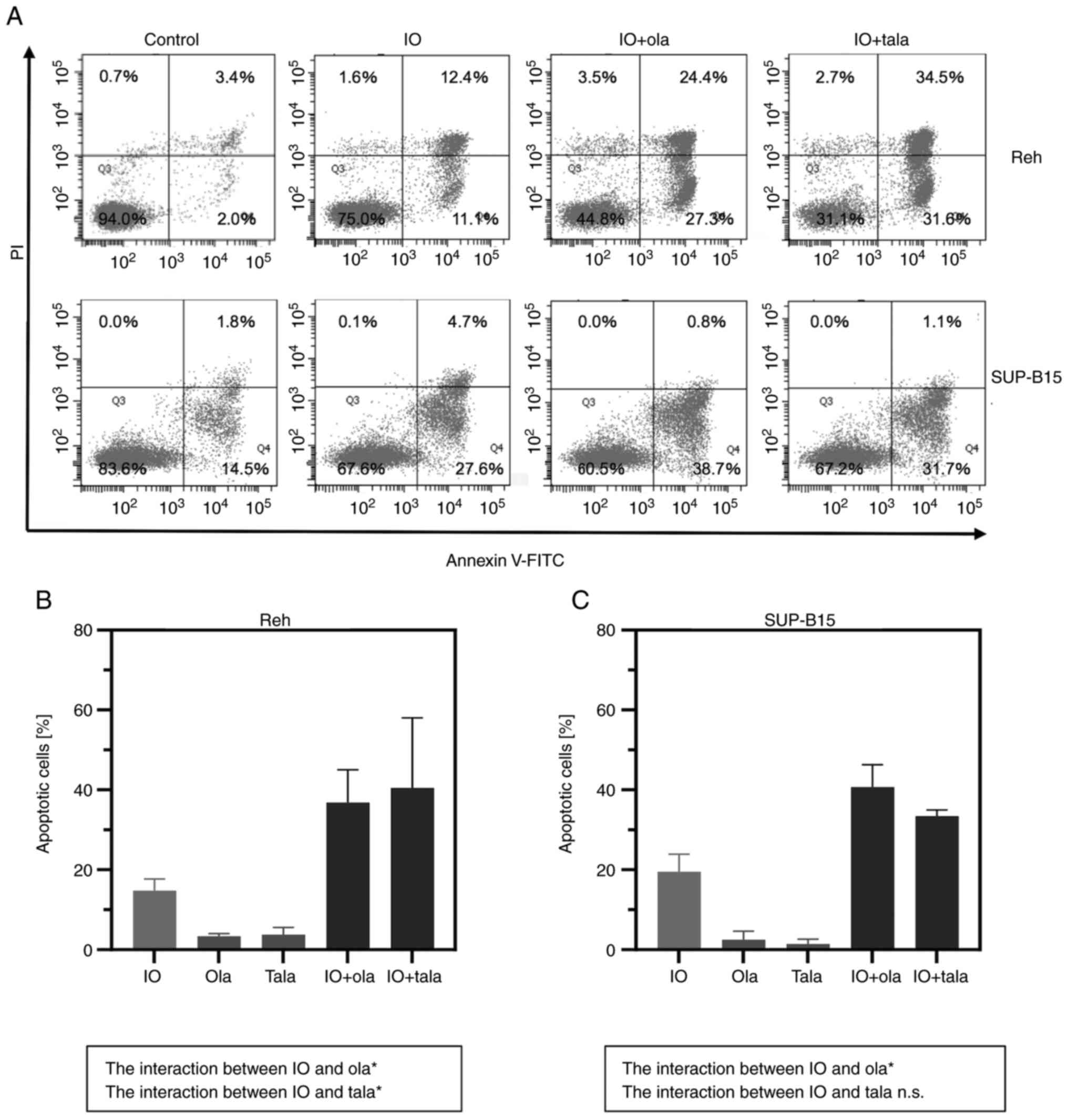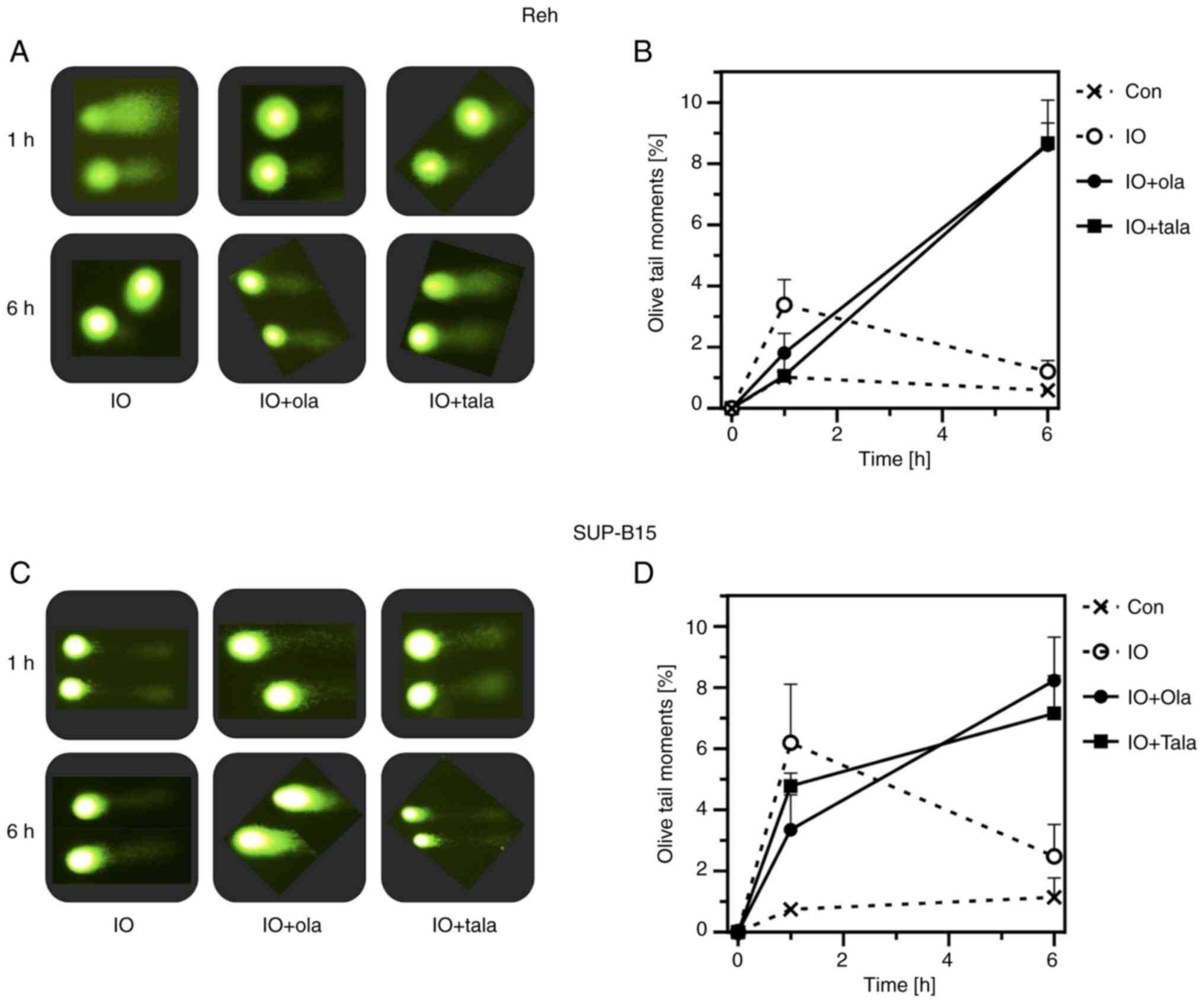|
1
|
Annino L, Vegna ML, Camera A, Specchia G,
Visani G, Fioritoni G, Ferrara F, Peta A, Ciolli S, Deplano W, et
al: Treatment of adult acute lymphoblastic leukemia (ALL):
Long-Term follow-up of the GIMEMA ALL 0288 randomized study. Blood.
99:863–871. 2002. View Article : Google Scholar : PubMed/NCBI
|
|
2
|
Takeuchi J, Kyo T, Naito K, Sao H,
Takahashi M, Miyawaki S, Kuriyama K, Ohtake S, Yagasaki F, Murakami
H, et al: Induction therapy by frequent administration of
doxorubicin with four other drugs, followed by intensive
consolidation and maintenance therapy for adult acute lymphoblastic
leukemia: The JALSG-ALL93 study. Leukemia. 16:1259–1266. 2002.
View Article : Google Scholar : PubMed/NCBI
|
|
3
|
Gökbuget N, Stanze D, Beck J, Diedrich H,
Horst HA, Hüttmann A, Kobbe G, Kreuzer KA, Leimer L, Reichle A, et
al: Outcome of relapsed adult lymphoblastic leukemia depends on
response to salvage chemotherapy, prognostic factors, and
performance of stem cell transplantation. Blood. 120:2032–2041.
2012. View Article : Google Scholar : PubMed/NCBI
|
|
4
|
Kantarjian HM, DeAngelo DJ, Stelljes M,
Martinelli G, Liedtke M, Stock W, Gökbuget N, O'Brien S, Wang K,
Wang T, et al: Inotuzumab ozogamicin versus standard therapy for
acute lymphoblastic leukemia. N Engl J Med. 375:740–753. 2016.
View Article : Google Scholar : PubMed/NCBI
|
|
5
|
Kantarjian HM, DeAngelo DJ, Stelljes M,
Liedtke M, Stock W, Gökbuget N, O'Brien SM, Jabbour E, Wang T,
Liang White J, et al: Inotuzumab ozogamicin versus standard of care
in relapsed or refractory acute lymphoblastic leukemia: Final
report and long-term survival follow-up from the randomized, phase
3 INO-VATE study. Cancer. 125:2474–2487. 2019. View Article : Google Scholar : PubMed/NCBI
|
|
6
|
Kantarjian HM, Su Y, Jabbour EJ,
Bhattacharyya H, Yan E, Cappelleri JC and Marks DI:
Patient-Reported outcomes from a phase 3 randomized controlled
trial of inotuzumab ozogamicin versus standard therapy for
relapsed/refractory acute lymphoblastic leukemia. Cancer.
124:2151–2160. 2018. View Article : Google Scholar : PubMed/NCBI
|
|
7
|
de Vries JF, Zwaan CM, De Bie M, Voerman
JSA, den Boer ML, van Dongen JJM and van der Velden VHJ: The novel
calicheamicin-conjugated CD22 antibody inotuzumab ozogamicin
(CMC-544) effectively kills primary pediatric acute lymphoblastic
leukemia cells. Leukemia. 26:255–264. 2012. View Article : Google Scholar : PubMed/NCBI
|
|
8
|
Rose M, Burgess JT, O'Byrne K, Richard DJ
and Bolderson E: PARP inhibitors: Clinical relevance, mechanisms of
action and tumor resistance. Front Cell Dev Biol. 8:5646012020.
View Article : Google Scholar : PubMed/NCBI
|
|
9
|
DiSilvestro P, Colombo N, Harter P,
González-Martín A, Ray-Coquard I and Coleman RL: Maintenance
treatment of newly diagnosed advanced ovarian cancer: Time for a
paradigm shift? Cancers (Basel). 13:57562021. View Article : Google Scholar : PubMed/NCBI
|
|
10
|
Bryant HE, Schultz N, Thomas HD, Parker
KM, Flower D, Lopez E, Kyle S, Meuth M, Curtin NJ and Helleday T:
Specific killing of BRCA2-Deficient tumours with inhibitors of
poly(ADP-Ribose) polymerase. Nature. 434:913–917. 2005. View Article : Google Scholar : PubMed/NCBI
|
|
11
|
Cortesi L, Rugo HS and Jackisch C: An
overview of PARP inhibitors for the treatment of breast cancer.
Targ Oncol. 16:255–282. 2021. View Article : Google Scholar : PubMed/NCBI
|
|
12
|
Chou TC: Drug combination studies and
their synergy quantification using the chou-talalay method. Cancer
Res. 70:440–446. 2010. View Article : Google Scholar : PubMed/NCBI
|
|
13
|
Bhatla T, Wang J, Morrison DJ, Raetz EA,
Burke MJ, Brown P and Carroll WL: Epigenetic reprogramming reverses
the relapse-specific gene expression signature and restores
chemosensitivity in childhood B-Lymphoblastic leukemia. Blood.
119:5201–5210. 2012. View Article : Google Scholar : PubMed/NCBI
|
|
14
|
Uy N, Nadeau M, Stahl M and Zeidan AM:
Inotuzumab ozogamicin in the treatment of relapsed/refractory acute
B cell lymphoblastic leukemia. J Blood Med. 9:67–74. 2018.
View Article : Google Scholar : PubMed/NCBI
|
|
15
|
Pardee TS, Stadelman K, Gee JJ, Caudell DL
and Gmeiner WH: The poison oligonucleotide F10 is highly effective
against acute lymphoblastic leukemia while sparing normal
hematopoietic cells. Oncotarget. 5:4170–4179. 2014. View Article : Google Scholar : PubMed/NCBI
|
|
16
|
Punzo F, Argenziano M, Tortora C, Paola
AD, Mutarelli M, Pota E, Martino MD, Pinto DD, Marrapodi MM,
Roberti D, et al: Effect of CB2 stimulation on gene expression in
pediatric B-Acute lymphoblastic leukemia: New possible targets. Int
J Mol Sci. 23:86512022. View Article : Google Scholar : PubMed/NCBI
|
|
17
|
Kumaravel TS, Vilhar B, Faux SP and Jha
AN: Comet assay measurements: A perspective. Cell Biol Toxicol.
25:53–64. 2009. View Article : Google Scholar : PubMed/NCBI
|
|
18
|
Madhusudan S and Hickson ID: DNA Repair
inhibition: A selective tumour targeting strategy. Trends Mol Med.
11:503–511. 2005. View Article : Google Scholar : PubMed/NCBI
|
|
19
|
Moynahan ME and Jasin M: Mitotic
homologous recombination maintains genomic stability and suppresses
tumorigenesis. Nat Rev Mol Cell Biol. 11:196–207. 2010. View Article : Google Scholar : PubMed/NCBI
|
|
20
|
Ceccaldi R, Rondinelli B and D'Andrea AD:
Repair pathway choices and consequences at the double-strand break.
Trends Cell Biol. 26:52–64. 2016. View Article : Google Scholar : PubMed/NCBI
|
|
21
|
O'Connor MJ: Targeting the DNA damage
response in cancer. Mol Cell. 60:547–560. 2015. View Article : Google Scholar : PubMed/NCBI
|
|
22
|
Elmroth K, Nygren J, Mårtensson S, Ismail
IH and Hammarsten O: Cleavage of cellular DNA by calicheamicin
gamma1. DNA Repair (Amst). 2:363–374. 2003. View Article : Google Scholar : PubMed/NCBI
|
|
23
|
Javle M and Curtin NJ: The role of PARP in
DNA repair and its therapeutic exploitation. Br J Cancer.
105:1114–1122. 2011. View Article : Google Scholar : PubMed/NCBI
|
|
24
|
Mariano G, Ricciardi MR, Trisciuoglio D,
Zampieri M, Ciccarone F, Guastafierro T, Calabrese R, Valentini E,
Tafuri A, Bufalo DD, et al: PARP inhibitor ABT-888 affects response
of MDA-MB-231 cells to doxorubicin treatment, targeting snail
expression. Oncotarget. 6:15008–15021. 2015. View Article : Google Scholar : PubMed/NCBI
|
|
25
|
Wu J, Xiao S, Yuan M, Li Q, Xiao G, Wu W,
Ouyang Y, Huang L and Yao C: PARP inhibitor re-sensitizes
adriamycin resistant leukemia cells through DNA damage and
apoptosis. Mol Med Rep. 19:75–84. 2019.PubMed/NCBI
|
|
26
|
Yamauchi T, Uzui K, Nishi R, Shigemi H and
Ueda T: Gemtuzumab ozogamicin and olaparib exert synergistic
cytotoxicity in CD33-positive HL-60 myeloid leukemia cells.
Anticancer Res. 34:5487–5494. 2014.PubMed/NCBI
|
|
27
|
Ariumi Y, Masutani M, Copeland TD, Mimori
T, Sugimura T, Shimotohno K, Ueda K, Hatanaka M and Noda M:
Suppression of the poly(ADP-Ribose) polymerase activity by
DNA-dependent protein kinase in vitro. Oncogene. 18:4616–4625.
1999. View Article : Google Scholar : PubMed/NCBI
|
|
28
|
Galande S and Kohwi-Shigematsu T:
Poly(ADP-ribose) polymerase and Ku autoantigen form a complex and
synergistically bind to matrix attachment sequences. J Biol Chem.
274:20521–20528. 1999. View Article : Google Scholar : PubMed/NCBI
|
|
29
|
Haince JF, Kozlov S, Dawson VL, Dawson TM,
Hendzel MJ, Lavin MF and Poirier GG: Ataxia telangiectasia mutated
(ATM) signaling network is modulated by a novel
poly(ADP-ribose)-dependent pathway in the early response to
DNA-damaging agents. J Biol Chem. 282:16441–16453. 2007. View Article : Google Scholar : PubMed/NCBI
|
|
30
|
Haince JF, McDonald D, Rodrigue A, Déry U,
Masson JY, Hendzel MJ and Poirier GG: PARP1-dependent kinetics of
recruitment of MRE11 and NBS1 proteins to multiple DNA damage
sites. J Biol Chem. 283:1197–1208. 2008. View Article : Google Scholar : PubMed/NCBI
|
|
31
|
Tirrò E, Massimino M, Romano C, Pennisi
MS, Stella S, Vitale SR, Fidilio A, Manzella L, Parrinello NL,
Stagno F, et al: Chk1 inhibition restores inotuzumab ozogamicin
citotoxicity in CD22-positive cells expressing mutant P53. Front
Oncol. 9:572019. View Article : Google Scholar : PubMed/NCBI
|
|
32
|
Takeshita A, Shinjo K, Yamakage N, Ono T,
Hirano I, Matsui H, Shigeno K, Nakamura S, Tobita T, Maekawa M, et
al: CMC-544 (inotuzumab ozogamicin) shows less effect on multidrug
resistant cells: Analyses in cell lines and cells from patients
with B-cell chronic lymphocytic leukaemia and lymphoma. Br J
Haematol. 146:34–43. 2009. View Article : Google Scholar : PubMed/NCBI
|
|
33
|
Jabbour EJ, Sasaki K, Ravandi F, Short NJ,
Garcia-Manero G, Daver N, Kadia T, Konopleva M, Jain N, Cortes J,
et al: Inotuzumab ozogamicin in combination with low-intensity
chemotherapy (Mini-HCVD) with or without blinatumomab versus
standard intensive chemotherapy (HCVAD) as frontline therapy for
older patients with philadelphia chromosome-negative acute
lymphoblastic leukemia: A propensity score analysis. Cancer.
125:2579–2586. 2019. View Article : Google Scholar : PubMed/NCBI
|
|
34
|
Kantarjian H, Haddad FG, Jain N, Sasaki K,
Short NJ, Loghavi S, Kanagal-Shamanna R, Jorgensen J, Khouri I,
Kebriaei P, et al: Results of salvage therapy with mini-hyper-CVD
and inotuzumab ozogamicin with or without blinatumomab in pre-B
acute lymphoblastic leukemia. J Hematol Oncol. 16:442023.
View Article : Google Scholar : PubMed/NCBI
|
|
35
|
Javad N, Francisca V and James MM:
Bridging the gap between cancer cell line models and tumours using
gene expression data. Br J Cancer. 125:311–312. 2021. View Article : Google Scholar
|
|
36
|
Wilding JL and Bodmer WF: Cancer cell
lines for drug discovery and development. Cancer Res. 74:2377–2384.
2014. View Article : Google Scholar : PubMed/NCBI
|
|
37
|
Ricart AD: Antibody-drug conjugates of
calicheamicin derivative: Gemtuzumab ozogamicin and inotuzumab
ozogamicin. Clin Cancer Res. 17:6417–6427. 2011. View Article : Google Scholar : PubMed/NCBI
|
|
38
|
Yonemori K, Tamura K, Kodaira M, Fujikawa
K, Sagawa T, Esaki T, Shirakawa T, Hirai F, Yokoi Y, Kawata T, et
al: Safety and tolerability of the olaparib tablet formulation in
Japanese patients with advanced solid tumours. Cancer Chemother
Pharmacol. 78:525–531. 2016. View Article : Google Scholar : PubMed/NCBI
|
|
39
|
Naito Y, Kuboki Y, Ikeda M, Harano K,
Matsubara N, Toyoizumi S, Mori Y, Hori N, Nagasawa T and Kogawa T:
Safety, pharmacokinetics, and preliminary efficacy of the PARP
inhibitor talazoparib in Japanese patients with advanced solid
tumors: Phase 1 study. Invest New Drugs. 39:1568–1576. 2021.
View Article : Google Scholar : PubMed/NCBI
|
|
40
|
Lee JM, Peer CJ, Yu M, Amable L, Gordon N,
Annunziata CM, Houston N, Goey AKL, Sissung TM, Parker B, et al:
Sequence-specific pharmacokinetic and pharmacodynamic phase I/Ib
study of olaparib tablets and carboplatin in Women's cancer. Clin
Cancer Res. 23:1397–1406. 2017. View Article : Google Scholar : PubMed/NCBI
|
|
41
|
Bang YJ, Xu RH, Chin K, Lee KW, Park SH,
Rha SY, Shen L, Qin S, Xu N, Im SA, et al: Olaparib in combination
with paclitaxel in patients with advanced gastric cancer who have
progressed following first-line therapy (GOLD): A double-blind,
randomised, placebo-controlled, phase 3 trial. Lancet Oncol.
18:1637–1651. 2017. View Article : Google Scholar : PubMed/NCBI
|
|
42
|
Oza AM, Cibula D, Benzaquen AO, Poole C,
Mathijissen RHJ, Sonke GS, Colombo N, Spacek J, Vuylsteke P, Hirte
H, et al: Olaparib combined with chemotherapy for recurrent
platinum-sensitive ovarian cancer: A randomised phase 2 trial.
Lamcet Oncol. 16:87–97. 2015. View Article : Google Scholar
|
|
43
|
Lai Y, Wei X, Lin S, Qin L, Cheng L and Li
P: Current status and perspectives of patient-derived xenograft
models in cancer research. J Hematol Oncol. 10:1062017. View Article : Google Scholar : PubMed/NCBI
|



